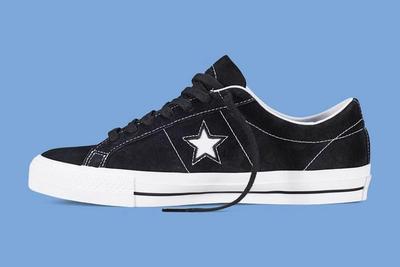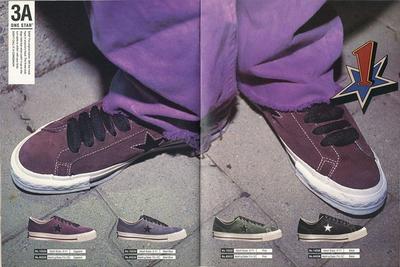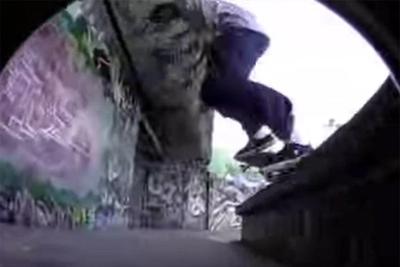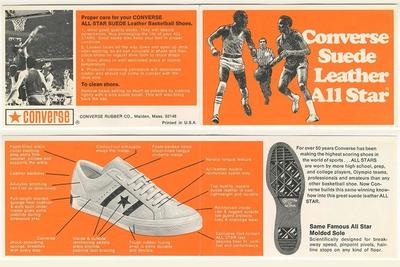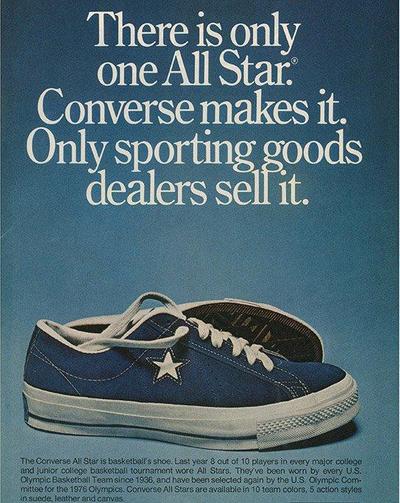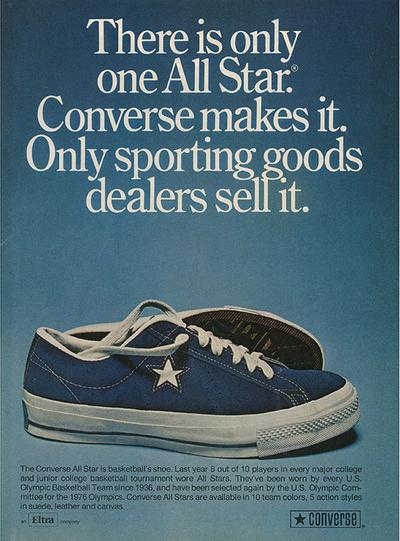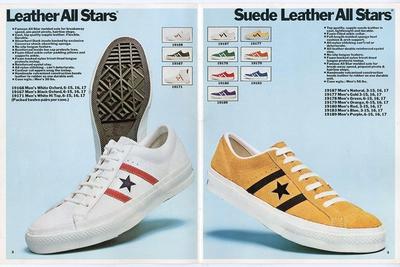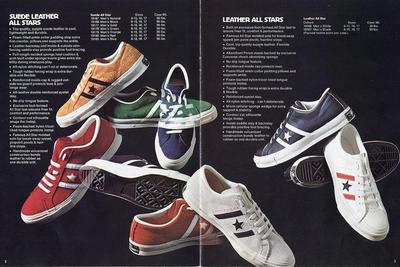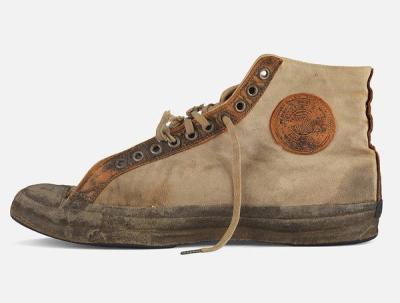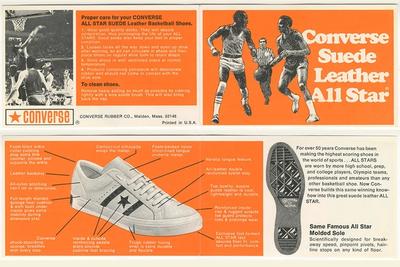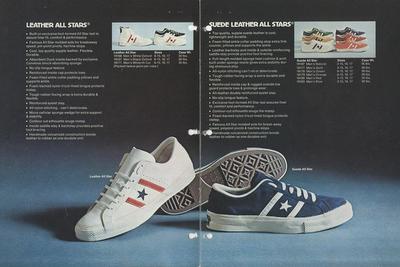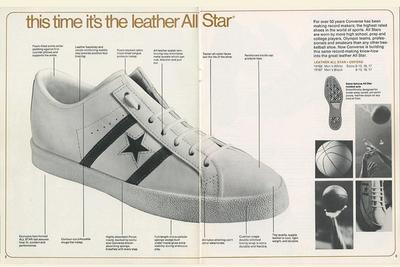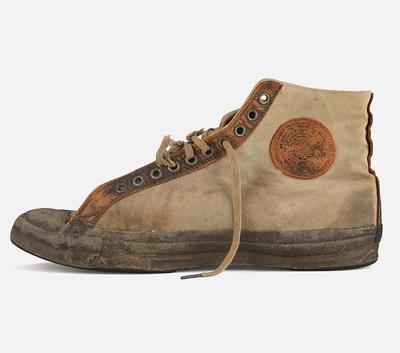An Icon Of Rebellion: The Converse One Star
The Converse One Star has developed a tough rep over the years. Establishing a strong countercultural following, the sneaker has a raw energy that resonates with its idealistic young wearers. Its honest simplicity stood out when the footwear industry was engaged in a technological arms race, and rebellious rockers and skaters on the fringe took it into the fold. It’s also worth noting that decades before all of this, the fledgling basketball shoe went through its own adolescence, attempting to carve out a place among a changing game. From sporting icon to cultural outsider, the One Star has had an exciting life.
By the late 60s there were other brands to compete with in the basketball arena. PUMA and adidas offered premium options such as leather and suede. The canvas shoe had a new partner on the court, so in keeping with the times Converse developed their All Star Leather – utilising a new cut-away star branding to show off the layered construction of the technologically advanced design. The familiar chevron branding didn’t accompany the star at this point, instead the star sat between a pair of parallel stripes, which slanted downward towards the heel from the laces. Converse produced several versions of low-cut leather and suede sneakers over the next few years, even experimenting with a tennis model.
The early-90s was an innovative time, particularly in the footwear world. The early years introduced some of today’s most iconic sneakers – consumers were won over by advanced technology, manufacturing and materials. Of course, the Newtonian law of fashion kicked into gear at this point, and as brightly coloured, teched out footwear swept across the planet – a rebellion was bubbling up within the grunge movement and the burgeoning skate scene.
The folk at Converse had noticed the snap-back and digging back into their archives they re-discovered the perfect shoe for the new wave of rebellion – in 1993 the Converse One Star made a comeback. The shoe was marketed out of sight of the mainstream, hitting print in mags like Thrasher, and it didn’t take long for the scene kids to catch on. A low price point and hard-wearing build, combined with flex and boardfeel appealed to skaters everywhere. Spike Jonze had been involved with advertising the shoe and as part owner of Girl Skateboards introduced the One Star to – among others – team rider Guy Mariano. When Girl’s seminal video Mouse dropped in ’96, Mariano’s tech onslaught had skate rats mesmerised as they rewound and paused to study his feet – the image of Mariano’s black sneaker, with its contrasting white star, was burned into their memories.
In Japan the shoe had reached icon status thanks to the freedom given to the regional licensee and the buying power of the world’s second largest consumer market. Japanese designers like Number (n)ine had their turn at re-imagining the One Star, elevating it to new levels in the eyes of the supremely fashionable. Contemporary designers including Hiroshi Fujiwara are keeping the street scene hyped on the One Star.
As a skate shoe, the One Star has stayed strong – while videos like Supreme’s Cherry stay on replay, the sneaker receives all the attention it did when the VHS of Mouse released twenty years earlier. A huge contingent of skaters has stuck to the unadulterated ride offered by a vulcanised sole while Covnerse’s pro team – under the offshoot – have kept the image strong. Veterans like Rune Glifberg, and Don Nguyen; innovators like Pontus Alv and Sammy Baca; and young guns like Sean Pablo and Sage Elsesser have pushed the star to the forefront of the sport. In was officially welcomed into the CONS family with its first skate specific rebuild. The addition of Lunarlon cushioning, new rubber and a gusseted tongue took the vintage style to new levels of comfort and durability.
The counter-cultural Converse has earned its spot as the icon of effortless style. As relevant now as it ever was, the One Star can still teach us a thing or two about getting back to basics. In an age when your shoes can talk to your mobile phone, the need to disconnect from the mayhem burns brightly – the One Star is the solution, as it was and as it will be for decades to come.

